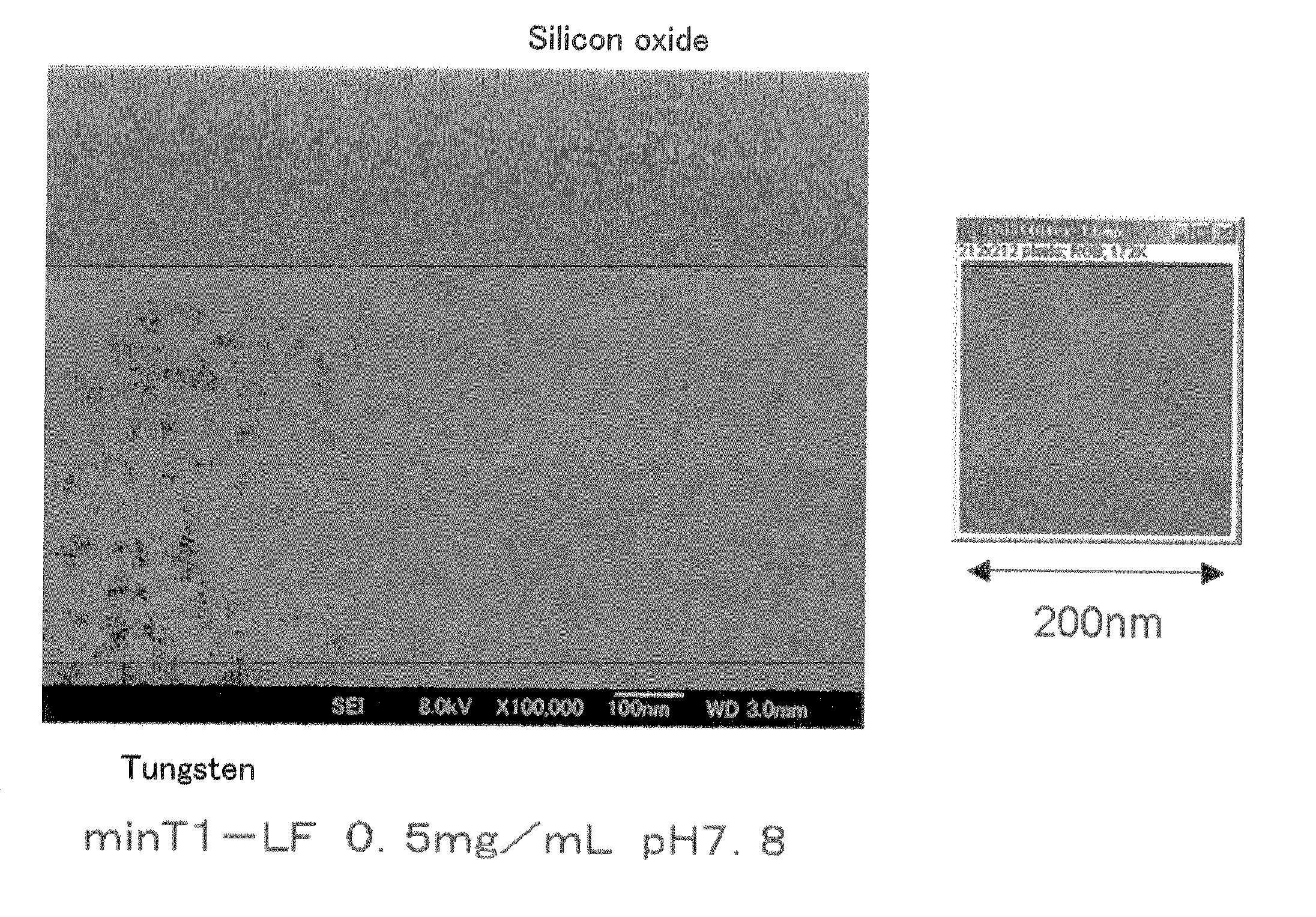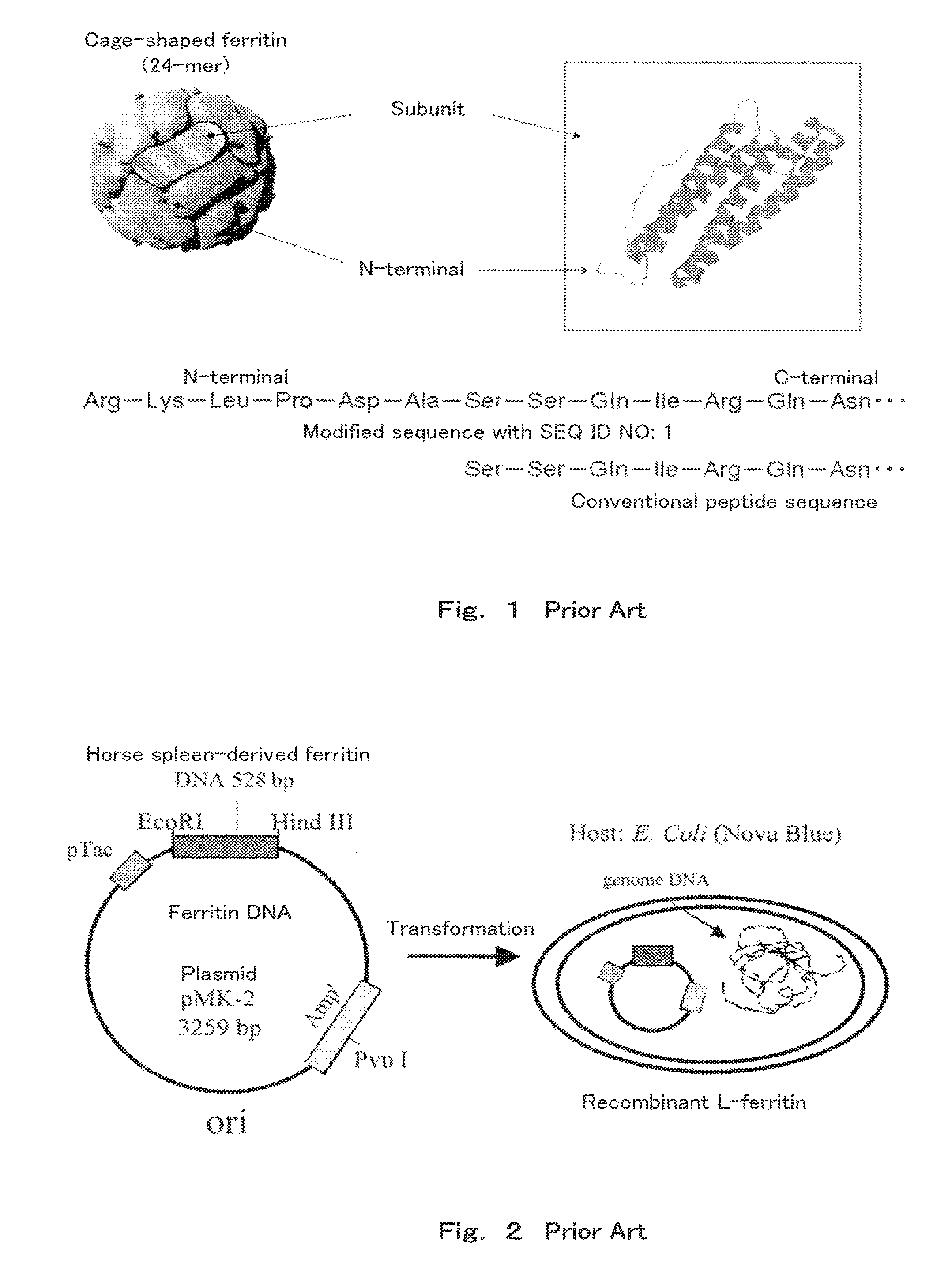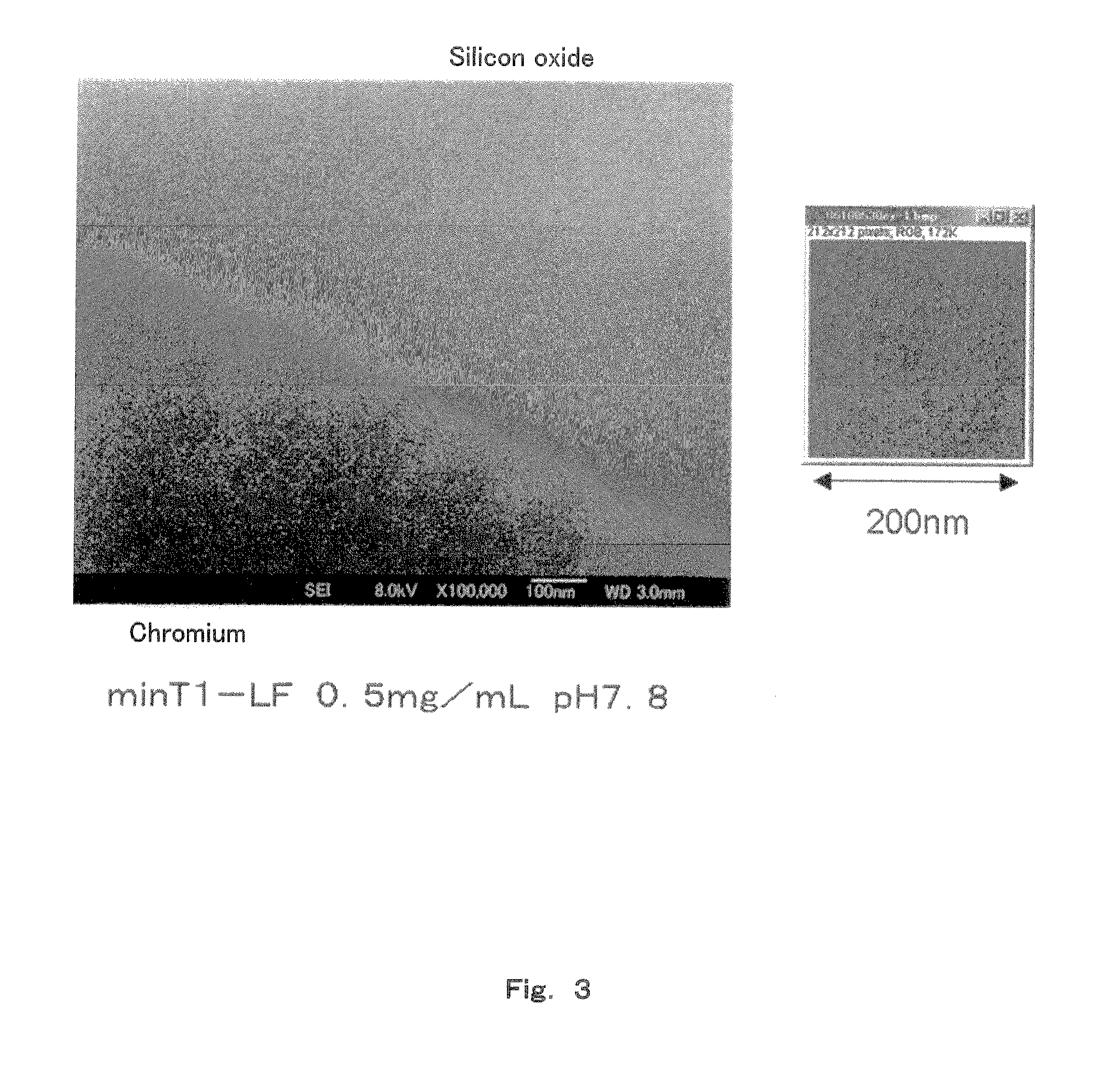Method of arraying ferritin
- Summary
- Abstract
- Description
- Claims
- Application Information
AI Technical Summary
Benefits of technology
Problems solved by technology
Method used
Image
Examples
example 1
[0058]First, a method of producing ferritin used in Examples below is explained. In Examples of the present application, recombinant ferritin “minT1-LF” modified with a polypeptide set out in SEQ ID NO: 1 at the N-terminal, and recombinant ferritin “Δ1-LF” not having the sequence set out in SEQ ID NO: 1 were used.
[0059]First, a method of producing Δ1-LF is explained. Since there are L-type and H-type subunits of natural horse spleen-derived ferritin having slightly different structures, natural ferritin does not have a certain structure. Thus, in Examples of the present application, recombinant ferritin consisting only of the L-type subunit was used.
[0060]The DNA (SEQ ID NO: 2,528 base pairs) coding for L-type ferritin was first amplified using a PCR method to provide a large amount of L-type ferritin DNA. Next, this L-type ferritin DNA was cut at specific sites (restriction enzyme sites) with restriction enzymes EcoRI and HindIII. A solution of an L-type ferritin DNA fragment havin...
example 2
[0086]50 mM MES-Tris prepared to have a pH each adjusted to 6.7, 7.4, 7.8, 8.0 and 8.2 were used as the buffer, and solutions were prepared having a ferritin concentration of 2.0 mg / mL and a nonionic surfactant (Tween 20) concentration of 1 v / v %.
[0087]Then, a binding step similar to that in Example 1 was carried out using this solution. SEM images of the substrate surface after the binding step are shown in FIG. 6, and the results of measurement of the number of the minT1-LF are shown in FIG. 7. When the pH was 7.4 or 6.7, the minT1-LF was likely to aggregate in the solution, and thus the solution became turbid immediately after mixing at pH 6.7, and after several minutes passed at pH 7.4. Thus, aggregates were frequently found also for the minT1-LF arrayed on the solid surface. Although the results of measurement for the portion other than the aggregates are shown in FIG. 7, it was difficult to obtain stable results at a pH lower than 7.4. It was necessary to complete the operatio...
example 3
[0092]To a solution containing 50 mM MES-Tris (pH 7.8) as the buffer, and ferritin at a concentration of 0.5 mg / mL, was added a nonionic surfactant Tween 20 at each concentration of 0.005, 0.01, 0.1, 1, 5, 10, 15 and 20 v / v % to prepare solutions. These solutions were added to a silicon oxide / tungsten substrate dropwise, and subjected to the binding step.
[0093]The nonionic surfactant has a high viscosity, and is likely to form bubbles; therefore, reproducible results were not obtained when the concentration of the nonionic surfactant was 15 v / v % or 20 v / v %. The number of array of the minT1-LF was almost constant at a tungsten portion. On the silicon oxide substrate, the array number abruptly increased when the concentration was lower than 0.01 v / v %, and the number was almost the same as that on tungsten when the concentration was 0.005 v / v %. From the foregoing results, the minT1-LF achieved selectivity of array to the tungsten portion at a concentration of the nonionic surfactan...
PUM
 Login to View More
Login to View More Abstract
Description
Claims
Application Information
 Login to View More
Login to View More - R&D
- Intellectual Property
- Life Sciences
- Materials
- Tech Scout
- Unparalleled Data Quality
- Higher Quality Content
- 60% Fewer Hallucinations
Browse by: Latest US Patents, China's latest patents, Technical Efficacy Thesaurus, Application Domain, Technology Topic, Popular Technical Reports.
© 2025 PatSnap. All rights reserved.Legal|Privacy policy|Modern Slavery Act Transparency Statement|Sitemap|About US| Contact US: help@patsnap.com



